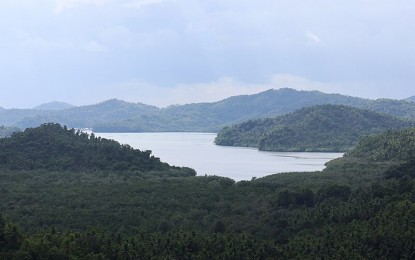
RED TIDE-POSITIVE. A view of the Cambatutay Bay in Tarangnan, Samar. Water and meat samples collected in the bay and three other areas in Samar have turned positive for toxic red tide, prompting the Bureau of Fisheries and Aquatic Resources to raise a warning on the consumption of shellfish gathered in the area, the bureau said on Friday (Dec. 1, 2023). (Photo courtesy of Patrick Roque)
TACLOBAN CITY - The Bureau of Fisheries and Aquatic Resources (BFAR) confirmed Friday the presence of red tide in Cambatutay Bay in Samar based on the latest examination of meat samples.
Seawater samples collected in Cambatutay Bay have tested positive for red tide since Oct. 23, 2023.
However, it was only on Nov. 30, 2023, that authorities found the presence of toxins in shellfish meat.
Aside from Cambatutay Bay, BFAR has also raised warnings in three other bays after seawater samples collected turned positive for a toxic organism that causes paralytic shellfish poisoning (PSP).
These three areas are the coastal waters of Guiuan, Eastern Samar; Irong-Irong Bay in Catbalogan City, Samar; Matarinao Bay General MacArthur, Quinapondan, Hernani, and Salcedo in Eastern Samar.
“There is no shellfish ban in the region per the latest shellfish bulletin. However, these areas are under local red tide advisories. Samples collected from these bays and coastal waters are positive for pyrodinium bahamense, a toxic microorganism that causes PSP,” the BFAR regional office statement said.
BFAR has reiterated calls for the public to refrain from gathering, selling, and eating all types of shellfish and Acetes sp., locally known as "alamang" or "hipon" from these bays despite not being covered by the existing shellfish bulletin.
“Fish, squids, shrimps, and crabs are safe for human consumption, provided that they are fresh and washed thoroughly, and their internal organs, such as gills and intestines, are removed before cooking,” it added.
BFAR also submitted samples collected from these bays to their main office for confirmatory testing and inclusion in future national shellfish bulletins.
The monitoring will continue to check the possible recurrence despite the lifting of the shellfish ban in some areas in the region.
The regular water sample checks cover the coastal waters of Daram, Zumarraga, and Villareal Bay in Samar; San Pedro Bay in Samar; coastal waters of Leyte, Calubian, Ormoc, Sogod, Carigara Bay, and Cancabato Bay, Tacloban City in Leyte; and coastal waters of Biliran Island.
These areas had a history of red tide.
BFAR regularly analyzes water samples through its regional laboratory to ensure that shellfish gathered from these areas are safe for human consumption. (PNA)
